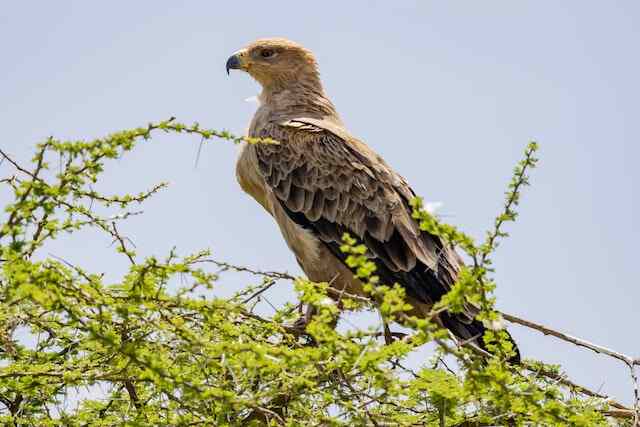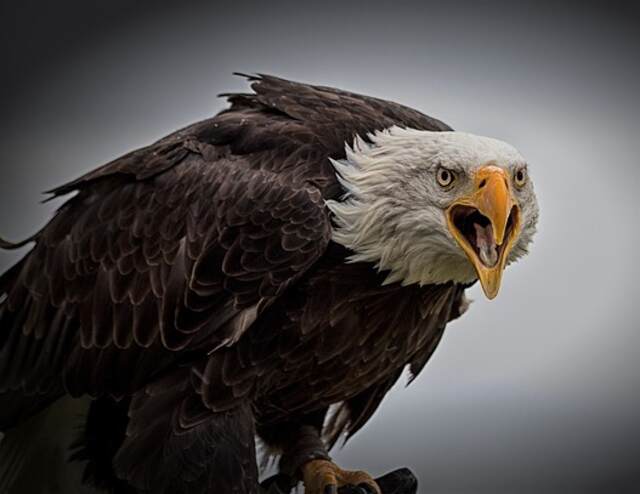Eagles are majestic birds of prey that are often associated with freedom and strength. They are revered for their ability to soar high in the sky and their sharp vision, which allows them to hunt with precision.
However, despite their impressive characteristics, there is a question that has been asked by many: are eagles mammals?
This seemingly simple question may evoke a sense of irony, as it is common knowledge that eagles are birds.
However, it is important to delve deeper into the classification of animals and understand the characteristics that define them.
By exploring the anatomy and physiology of eagles, as well as the definition of mammals, we can come to a better understanding of why eagles are indeed not mammals.
In this article, we will examine the characteristics that distinguish eagles from mammals and explore the adaptations that have allowed them to thrive in their environment.
Table of Contents
- 1 Key Takeaways
- 2 Overview of Eagles
- 3 What Are Mammals?
- 4 Eagles Belong to the Aves Class
- 5 Anatomical and Physiological Differences
- 6 Are Eagles Mammals
- 7 Eagles Don’t Have Mammary Glands
- 8 Unique Features of Eagles
- 9 Adaptations to Their Environment
- 10 Eagles in Culture and History
- 11 Conservation of Eagles
- 12 Similarities Between Eagles and Mammals
- 13 Frequently Asked Questions
- 14 Conclusion
- 15 Author
Key Takeaways
- Eagles are not mammals, but birds of prey belonging to the aves class with unique adaptations.
- Eagles have remarkable characteristics such as sharp talons, keen eyesight, and powerful wingspan.
- Eagles play an important ecological role in their respective ecosystems as apex predators.
- Understanding the differences between eagles and mammals can provide insight into the diversity of life on our planet.

Overview of Eagles
Eagles are a group of large predatory birds that are known for their impressive wingspan, sharp talons, and keen eyesight.
They belong to the family Accipitridae and are found in various habitats worldwide, including deserts, forests, and wetlands.
These birds exhibit unique behavioral patterns, such as their ability to soar for hours without flapping their wings and their preference for nesting on high cliffs or trees.
They are carnivorous and feed on a variety of prey, including fish, small mammals, and other birds.
Although they are not mammals, eagles are fascinating creatures that have captured the imagination of humans for centuries.
Now, let’s move on to the next section to answer the question, ‘Are eagles mammals?’
What Are Mammals?
The classification of animals into groups is based on certain characteristics that distinguish them from one another, and one such group is characterized by the presence of mammary glands that produce milk for their young.
These animals are called mammals and are defined as warm-blooded vertebrates that have hair or fur, breathe air through lungs, and feed their young with milk produced by mammary glands.
Some common characteristics of mammals include the presence of a diaphragm, a four-chambered heart, and a complex brain.
They are also known for their ability to regulate their body temperature, which allows them to survive in a wide range of environments.
In summary, mammals are a diverse group of animals with distinct characteristics that set them apart from other groups. Eagles belong to the aves class, which is different from mammals in many ways.
Eagles Belong to the Aves Class
Flying creatures with feathers and wings belong to the aves class, which is distinct from the group of animals that produce milk for their young, or mammals.
Eagles, being birds, fall under the aves class and therefore are not mammals.
The evolution of the aves class is a fascinating topic, with evidence suggesting that birds evolved from reptilian ancestors.
Birds have several adaptations that set them apart from mammals, including lightweight bones, a lack of teeth, and the ability to fly.
These anatomical and physiological differences are what make birds such unique and interesting creatures.
Moving forward, it is important to explore the differences between eagles and mammals in more detail to gain a greater understanding of the diversity of life on our planet.

Anatomical and Physiological Differences
The adaptations that set birds apart from mammals include lightweight bones and a lack of teeth, which contribute to their ability to fly and make them unique creatures.
When comparing eagles to mammals, it is important to understand these differences in anatomy and physiology. Eagles, like all birds, have a beak instead of teeth, which is used for catching and tearing food.
They also have a lightweight skeletal system, which allows them to fly and hunt with precision.
In addition, eagles have a highly efficient respiratory system that enables them to extract oxygen from the air more efficiently than mammals.
These adaptations make eagles expert hunters and allow them to thrive in their environment. Classifying eagles as birds rather than mammals is crucial in understanding their unique adaptations.
The table below highlights some of the main anatomical and physiological differences between eagles and mammals.
| Eagles | Mammals | |
|---|---|---|
| Skeletal System | Lightweight bones, fused vertebrae | Heavy bones, articulated vertebrae |
| Respiratory System | Highly efficient air sacs and lungs | Lungs with alveoli |
| Digestive System | No teeth, beak for catching and tearing food | Teeth for grinding and chewing food |
It is clear that there are significant differences between eagles and mammals, which contribute to their unique characteristics and abilities.
While eagles may not have mammary glands like mammals, they have other adaptations that make them successful hunters and allow them to thrive in their environment.
Are Eagles Mammals
No, eagles are not mammals. Eagles belong to the class Aves, which includes birds. While they share some characteristics with mammals, such as being warm-blooded and having internal fertilization, they differ in key aspects like reproduction, respiratory system, and body structure. Eagles are magnificent birds of prey, not mammals.

Eagles Don’t Have Mammary Glands
Birds have a unique way of feeding their young that differs significantly from mammals. Unlike mammals, birds don’t have mammary glands to produce milk.
Therefore, they rely on regurgitated food to feed their young, which is an interesting adaptation that has evolved over time.
Understanding the differences between how birds and mammals feed their young can provide insight into the diverse ways that organisms have adapted to survive and reproduce in their respective environments.
How Birds Feed Their Young
Avian parents utilize various strategies to feed their young, such as regurgitating pre-digested food or catching prey and tearing it into small pieces.
Birds’ feeding behavior is an essential aspect of their parental care, as they need to provide their offspring with enough nutrients to survive and develop properly.
Some bird species, such as pigeons or doves, produce a special secretion called crop milk, which is rich in protein and fat and serves as a primary food source for their chicks.
Other birds, such as raptors or owls, hunt for prey and bring it back to their nests, where they tear it into small pieces and feed it to their young.
This process can be time-consuming and energy-demanding, as the parents need to hunt frequently to satisfy the high caloric requirements of their growing chicks.
Despite the differences in feeding strategies, all bird parents share the same goal: to ensure the survival and success of their offspring.
In the next section, we will explore the differences between birds and mammals, including their reproductive and physiological characteristics.
Differences Between Birds and Mammals
One notable difference between the reproductive strategies of birds and mammals is that birds lay eggs, while mammals give birth to live young.
This distinction can evoke strong emotional responses in humans who may feel a connection to the nurturing and protective behaviors of mammalian mothers.
For example, seeing a mother bear fiercely defending her cubs can elicit feelings of admiration and awe.
However, birds have evolved unique features such as flight adaptations and reproduction methods that make them distinct from mammals.
While mammals rely on their strong maternal instincts to care for their young, birds have developed strategies such as communal nesting and coordinated feeding to ensure the survival of their offspring.
These adaptations allow birds to thrive in diverse environments and fulfill their innate desire for freedom.
Transitioning into the subsequent section about the unique features of eagles, these majestic birds possess a range of adaptations that make them formidable predators in the skies.

Unique Features of Eagles
Eagles possess remarkable characteristics such as their sharp talons, keen eyesight, and powerful wingspan, which make them one of the most impressive predators in the animal kingdom.
These physical characteristics, along with their unique hunting techniques and behaviors, allow eagles to adapt to their environment and thrive in a variety of habitats.
For example, eagles have a unique feather structure that allows them to soar through the air without expending too much energy, making them efficient hunters.
Additionally, eagles are known for their impressive diving abilities, which allow them to quickly and accurately capture prey.
These adaptations to their environment have made eagles one of the most successful and iconic predators in the world.
Adaptations to Their Environment
The unique features of eagles allow them to thrive in their respective environments, but they have also developed specific adaptations to ensure their survival.
These adaptations include behavioral patterns such as hunting techniques, nesting habits, and migration patterns.
Eagles are apex predators and play an important ecological role in their respective ecosystems. Their presence ensures the balance of the food chain and helps control populations of prey species.
The ecological significance of eagles cannot be overstated, as they are indicators of a healthy environment.
As we move into the next section, we will explore the cultural and historical significance of eagles.
Eagles in Culture and History
Throughout history, various cultures have held eagles in high esteem, as evidenced by their depictions in mythology, folklore, and art. Eagles have been revered for their symbolic significance in different cultures around the world.
In ancient Greece, the eagle was associated with the god Zeus and was considered a symbol of strength and power.
In Native American cultures, eagles are believed to be messengers between humans and the divine. They are also associated with freedom, courage, and wisdom.
Eagles have been depicted in art for centuries, from ancient Egyptian hieroglyphics to contemporary paintings.
Their majestic appearance and powerful flight have inspired artists to create stunning representations of these birds.
In conclusion, eagles have played an important role in human culture and history, and their symbolic significance is still relevant today.
As we move forward, it is important to consider how we can protect and conserve these magnificent creatures for future generations.

Conservation of Eagles
Efforts to protect and preserve the habitats of eagles have become increasingly important in ensuring the survival of various species.
Conservation strategies have been implemented worldwide to address the increasing threats to eagle populations, including habitat loss due to human activities such as logging and development.
These efforts have included the establishment of protected areas, such as national parks and reserves, as well as the monitoring and management of eagle populations.
In addition, conservation organizations have been working to raise awareness about the importance of eagles and their role in maintaining healthy ecosystems.
Despite these efforts, eagles continue to face a range of challenges, including pollution, hunting, and climate change.
As we move forward, it is crucial that we continue to prioritize the conservation of these magnificent birds and their habitats.
The similarities between eagles and mammals are striking, and understanding these similarities can help us to better protect and conserve these important species.
Similarities Between Eagles and Mammals
Recognizing the shared biological characteristics between eagles and certain mammalian species can help us to appreciate the intricate interconnectedness of nature and the importance of preserving it.
When comparing characteristics, we can see that both eagles and mammals have a similar skeletal structure, with strong and lightweight bones that allow for efficient movement and flight.
Additionally, both eagles and mammals possess keen senses, such as sharp eyesight and acute hearing, that enable them to hunt and survive in their respective environments.
These similarities suggest evolutionary connections between the two groups, despite their vast differences in appearance and behavior.
By understanding the commonalities between eagles and mammals, we gain a deeper appreciation for the diversity of life on our planet and the importance of protecting it for future generations.
Frequently Asked Questions
What is the largest eagle species in the world?
The Philippine eagle is the largest eagle species in the world, with a wingspan of up to 7 feet. Eagle behavior and habitat preferences vary between species, and conservation efforts are necessary to counter population trends.
How long do eagles typically live in the wild?
The average lifespan of eagles in the wild varies depending on the species and habitat. Some may live up to 20-30 years, while others may only survive for a few years due to factors such as predation, disease, and habitat loss.
Do eagles migrate and, if so, where do they go?
Eagle migration patterns are diverse and depend on the species and region. Conservation efforts aim to protect these migratory birds, which face threats such as habitat loss and hunting. Understanding and preserving eagle migration is vital for their survival and the ecosystems they inhabit.
How do eagles hunt and what is their preferred prey?
Eagles use various hunting techniques such as soaring, stooping, and perch hunting. Their preferred prey includes fish, small mammals, and birds. They are skilled predators that can spot prey from great heights and use their sharp talons to catch and kill them.
Can eagles be domesticated or kept as pets?
Eagles cannot be domesticated or kept as pets. Eagle training techniques are used for conservation and educational purposes only. Legal restrictions on eagle ownership exist due to their protected status as migratory birds under federal law.

Conclusion
In conclusion, eagles are not mammals but belong to the Aves class. While they share some similarities with mammals such as having a high metabolic rate, they also have anatomical and physiological differences that set them apart.
For instance, eagles lack mammary glands, which are a defining feature of mammals. Nevertheless, eagles have developed adaptations to their environment that enable them to thrive in their habitats.
Despite not being mammals, eagles have played a significant role in culture and history.
As apex predators, they are revered for their strength and power and have been featured in art, literature, and mythology.
However, eagles are also facing conservation challenges due to habitat loss, climate change, and human activities.
As such, efforts to protect and conserve these magnificent birds are essential for maintaining their populations and preserving their ecological roles.
In conclusion, studying the similarities and differences between eagles and mammals provides insights into the diversity and complexity of life.
By understanding the adaptations and ecological roles of eagles, we can appreciate their place in the natural world and work towards their conservation.



